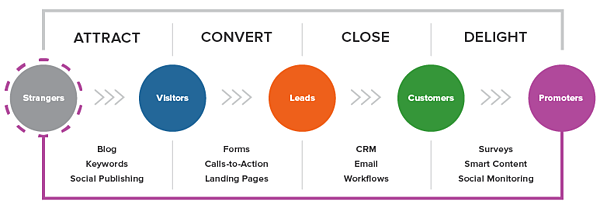Lead Generation is more than just a buzzword - it's the secret sauce to a business's success. It's the art and science of transforming a casual web surfer into a potential customer, all with the help of a well-optimized website. Any website can become a lead-generating powerhouse with the right tools and strategies, propelling businesses beyond survival into sustainable growth. Let's dive in and unravel the mysteries of lead generation, shall we?
What is a lead?
In Marketing, a lead refers to any individual or organization expressing an interest in your product or service. This interest is often demonstrated through various behaviors like filling out a form to download an eBook, signing up for a webinar or newsletter, or adding a product to the shopping cart. A lead is a prospective customer who is already partially through the buying process and, with the right nurturing, can be guided further down the sales funnel toward a purchase. However, it's crucial to remember that not all leads are created equal. The quality of a lead can significantly influence its likelihood of converting into a sale, making lead qualification an indispensable part of the lead generation process.

Source: HubSpot.com
What is a lead generation website?
A lead generation website is a strategic tool used in digital marketing designed to attract and convert visitors into potential customers or 'leads.' Unlike regular business websites, these are developed with a focus on user engagement, offering valuable content, and providing opportunities for visitors to leave their contact information. From carefully crafted landing pages filled with persuasive calls to action to enticing signup forms for newsletters or webinars, every element of a lead generation website is meticulously designed to move the visitor down the sales funnel. It's a digital storefront open 24/7, relentlessly working to capture leads and bring customers closer to a purchase.
The Advantages of Website Optimization for Lead Generation
Increased Conversion: An optimized website ensures a smooth and intuitive user experience, which leads to increased conversion rates. The easier it is for visitors to navigate your website and find what they're looking for, the higher the likelihood they'll become leads.
Higher Quality Leads: Using targeted content and strategically placed CTAs, an optimized website can attract more qualified leads. These visitors are more likely to be interested in your product or service and, thus, more likely to convert.
Improved SEO: Website optimization includes SEO optimization, which helps your website rank higher in search engine results pages (SERPs). The higher your ranking, the more visibility you get, leading to more traffic and potential leads.
Better Analytics: An optimized website is easier to track and analyze. You can use tools to see where your visitors are coming from, which pages they visit most, and where they drop off. This information can be invaluable in further optimizing your site and improving your lead generation.
Cost-Effective: Unlike traditional marketing methods, website optimization for lead generation is often more cost-effective. Once optimized, your website can continue generating leads 24/7 without any additional expense.
Increased Credibility and Trust: An optimized, professional-looking webpage can increase your credibility with potential leads. If visitors trust your site, they're more likely to trust your business and become a lead.
Scalability: As your business grows, your lead generation needs may also increase. An optimized website allows for scalability, ensuring it can handle increased traffic and lead generation.
7 tips for optimizing your website for lead generation
Audit your website regularly
Consistent website auditing is like a regular health check-up for your online business, ensuring everything runs smoothly and effectively. Auditing your site involves meticulously examining its performance, design, content, navigation, and SEO, among other factors, to boost lead generation. Unearth any usability issues, outdated content, or broken links that could hamper user experience or search engine performance. Regularly monitoring your website analytics can help identify which pages are performing well and which need improvement. An effective audit can uncover technical glitches and optimization opportunities that you might not have discovered otherwise. Remember, an optimized website is a magnet for leads.
Enhance your website loading time
In the high-speed internet world, patience is a virtue few possess. A slow-loading website is a perfect recipe for driving away potential leads. Studies have shown that a delay as short as a second in page loading time can result in a 7% reduction in conversions. Therefore, it's imperative to ensure your website loads swiftly. Optimize your images, minimize HTTP requests, reduce server response time, and enable browser caching to speed up your website. Remember, time is of the essence, and every millisecond counts in the battle for lead generation. Be swift, or be forgotten.
Optimize your UX for mobile devices
In an era dominated by smartphones, ensuring your website is mobile-friendly is no longer an optional luxury but a necessity. Websites not optimized for mobile devices risk alienating a significant chunk of potential leads who primarily use mobile devices for browsing. Mobile optimization goes beyond shrinking your website to fit smaller screens; it encompasses designing an intuitive user experience tailored to smaller devices. This includes larger buttons, easy-to-read text, and ensuring essential information is just a few taps away. A well-optimized mobile website attracts more traffic and significantly improves lead generation by appealing to the mobile-savvy audience. Remember, in the world of lead generation, mobile is king.
Design an engaging landing page
Your landing page serves as the gateway to your lead-generation efforts. It should be visually appealing, concise, and designed with the explicit intention of converting visitors into leads. Lean into compelling copy, high-quality images, and a clean, uncluttered design to make a powerful first impression. Critical elements of an effective landing page include:
A catchy headline.
A clear and enticing call-to-action (CTA).
A simple form for visitors to provide their contact information.
To increase conversion rates, ensure your landing page delivers on promises made in your ads or social media content. A well-optimized landing page is like a skilled sales representative, capturing visitors' interest and gently guiding them toward becoming leads. Remember, your landing page is your ace in the hole in lead generation.
Use the power of CTAs
Call-to-Actions (CTAs) are the secret spice in your website's lead-generation recipe. These powerful prompts guide your website visitors on the next steps they should take, whether it's subscribing to a newsletter, booking a free consultation, or downloading an e-book. A well-crafted CTA creates a sense of urgency, incites curiosity, and provides a clear action path. To further enhance their power, ensure your CTAs are visually striking and strategically placed in high-visibility areas on your website. Remember, a strong CTA could be the nudge that propels a hesitant visitor into a high-quality lead. Never underestimate the power of a well-placed "Click Here!" or "Download Now!" - after all, CTAs are your silent yet potent persuaders in lead generation.
Add subscription forms
Including subscription forms on your website is a straightforward yet effective tool for lead generation. These forms offer visitors a quick and easy way to register their interest, whether for a newsletter, a webinar, or a free trial. Moreover, they allow you to gather critical information about your audience, helping you tailor your content to their tastes and preferences, thus enhancing engagement. The trick to a compelling subscription form lies in its simplicity - ask only for the essential information (like name and email), keep the design clean and intuitive, and include a clear, action-driven headline. Remember, with every subscription form filled; you're adding another potential lead to your pipeline. In the world of lead generation, never underestimate the power of a simple "Subscribe Now" button!
Start a Blog section for your website
A blog section is an invaluable addition to your website in the quest for lead generation. By consistently posting relevant, high-quality content, you create a treasure trove of information that drives traffic to your website and establishes your brand as an authority in your field. Each blog post represents a new opportunity to generate leads - including compelling CTAs within the content. End each post with a solid invitation to subscribe or download a relevant resource. Additionally, blogs provide fresh content for SEO, boosting your visibility on search engines and drawing in more potential leads. Remember, in lead generation, your blog is not just a platform for sharing ideas—it's your secret weapon for attracting and nurturing potential leads.
Conclusion
In the digital frontier of lead generation, your website serves as your flagship and fortress. By optimizing for speed, honing your mobile UX, crafting compelling landing pages, harnessing the power of CTAs, implementing subscription forms, and regularly posting high-quality blog content, you turn your website into a lead-generating powerhouse. Optimizing a website for lead generation is continuous learning, experimenting, and refining. But remember — every tweak, every adjustment. Every change is closer to that perfect formula that turns curious visitors into committed leads. So venture forth, be bold, and conquer the realm of lead generation with your newly optimized website. After all, in online marketing, your website is your greatest ally. Harness its power, and the world of leads is yours to dominate.
Tags
Subscribe to
Our
Newsletter
Join 1,000+ people and recieve our weekly insights.

Success!
Thank your for subscribing to Buzzvel's
Newsletter, you will now
receive
amazing
tips
and insights weekly.




